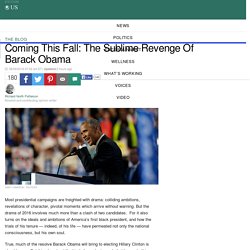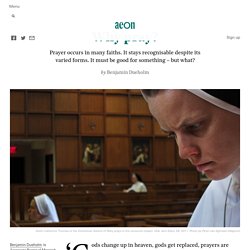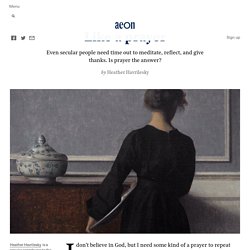

Sharon Salzberg and Robert Thurman — Meeting Our Enemies and Our Suffering. David Brooks and E.J. Dionne — Sinfulness, Hopefulness, and the Possibility of Politics. TheDocumentary 20160814 TheMuseumOfLostObjectsPalmyra. Seriously 20160812 TolkienTheLostRecordings. Joanna Macy — A Wild Love for the World. Joanna Macy — A Wild Love for the World. Coming This Fall: The Sublime Revenge Of Barack Obama. Most presidential campaigns are freighted with drama: colliding ambitions, revelations of character, pivotal moments which arrive without warning.

But the drama of 2016 involves much more than a clash of two candidates. For it also turns on the ideals and ambitions of America’s first black president, and how the trials of his tenure — indeed, of his life — have permeated not only the national consciousness, but his own soul. True, much of the resolve Barack Obama will bring to electing Hillary Clinton is about legacy. But it is also about the kind of man he is, and what he wants this country to be. And that is inexorably intertwined with the entirely different man who is Donald Trump. It is not my purpose here to make the historic case for Obama’s presidency.
He ameliorated the worst economic crisis since the Great Depression. In the area of foreign policy and national security, he took out bin Laden and decimated Al Qaeda. That verdict lies ahead. Walking While Black. Krista Tippett — The Mystery and Art of Living. What is prayer supposed to accomplish? — Aeon Essays. ‘Gods change up in heaven, gods get replaced, prayers are here to stay.’

So wrote the late Israeli poet Yehuda Amichai. Anyone not sharing his conviction might consider a visit to the Blue Lotus Buddhist temple in Woodstock, Illinois. Paying close attention is an art and an act of the s... It starts with the slightly awkward heave — leg up and over the seat, feet locating the stirrups — and the indrawn breath that says ‘Let’s go.’

This is a new discipline for me, this stationary bike, and I make sure to pace myself. I tip from side to side, easily and rhythmically, with a hint of a pulse, my movements mechanical at first, each slight shift of the vista in front of me tied to the downstroke of my foot on the pedal. After a while it becomes mildly hypnotic, not that I recognise this, though at some point I do register that time has blurred, that two or more minutes have clicked off on the digital counter without my noticing — I’ve been too caught up in whatever is piping through the wire in my ear, or gotten completely fixated on something I’m looking at through one or the other of the two windows.
And what do I see out there? Not much. Looking is oddly different on the stationary bike. Aeon. Standing Still in a Field of Flowers: Living with Social Anxiety. Living with social anxiety feels like being in a field of flowers that you can’t enjoy.

You can’t truly see them for what they are. You can’t smell them, pick them, or love them as you wish. You just stand there in the field, with beauty around you and no way to experience it fully. You just can’t, sometimes. That’s the best way that I can describe it. People in general are not easy for me, and I’ve felt guilty about this for so long. (Erika Layne / All rights reserved.) There aren’t any triggers for me, so I can’t prepare. I feel like my entire life has been a test. Wingspread. Wingspread Conference on the Precautionary Principle January 26, 1998 Last weekend at an historic gathering at Wingspread, headquarters of the Johnson Foundation, scientists, philosophers, lawyers and environmental activists, reached agreement on the necessity of the Precautionary Principle in public health and environmental decision-making.

Precautionary Principle. The precautionary principle or precautionary approach to risk management states that if an action or policy has a suspected risk of causing harm to the public or to the environment, in the absence of scientific consensus that the action or policy is not harmful, the burden of proof that it is not harmful falls on those taking an action.

The principle is used by policy makers to justify discretionary decisions in situations where there is the possibility of harm from making a certain decision (e.g. taking a particular course of action) when extensive scientific knowledge on the matter is lacking. The principle implies that there is a social responsibility to protect the public from exposure to harm, when scientific investigation has found a plausible risk. These protections can be relaxed only if further scientific findings emerge that provide sound evidence that no harm will result. Origins and theory[edit] Formulations[edit] Many definitions of the precautionary principle exist. USA[edit] Can secular people benefit from prayer? — Aeon Essays. I don’t believe in God, but I need some kind of a prayer to repeat when things go haywire.

I need a prayer because, as a writer with several unruly dependents under my roof, each day is a rollercoaster, a crapshoot, an exercise in uncertainty. Will the morning go well? That depends on my eight-year-old’s ability to make some tough wardrobe choices and my five-year-old’s ability to face ‘colouring dumb stuff’ in kindergarten.